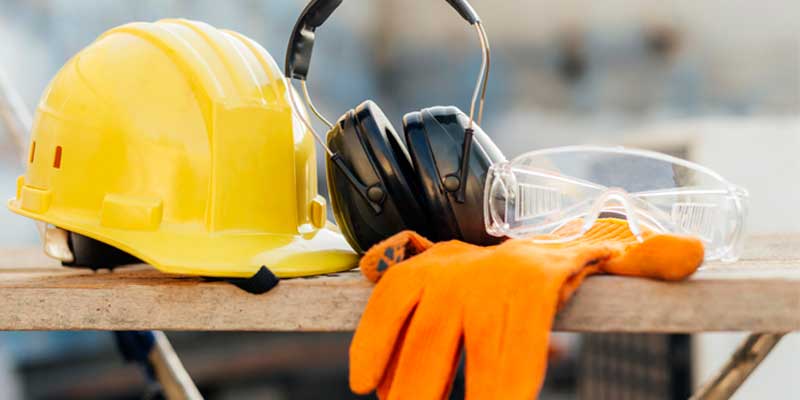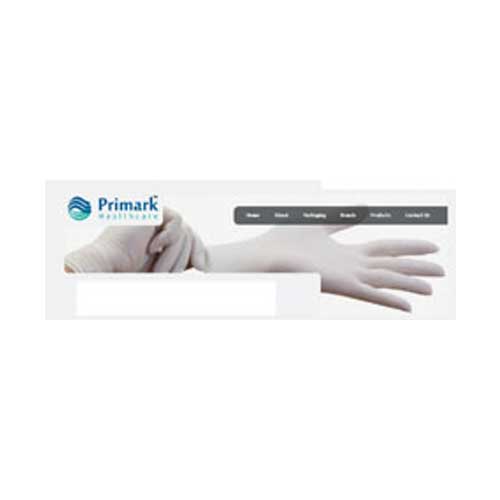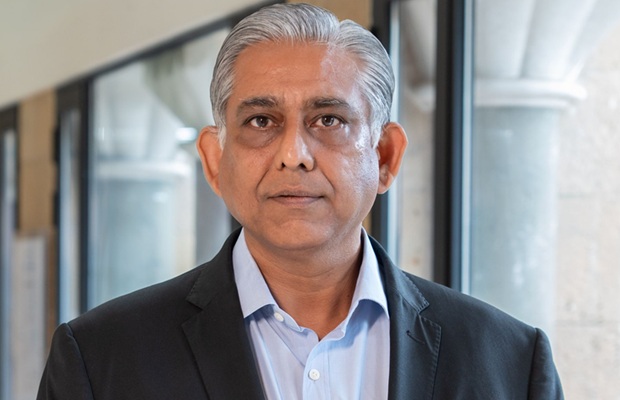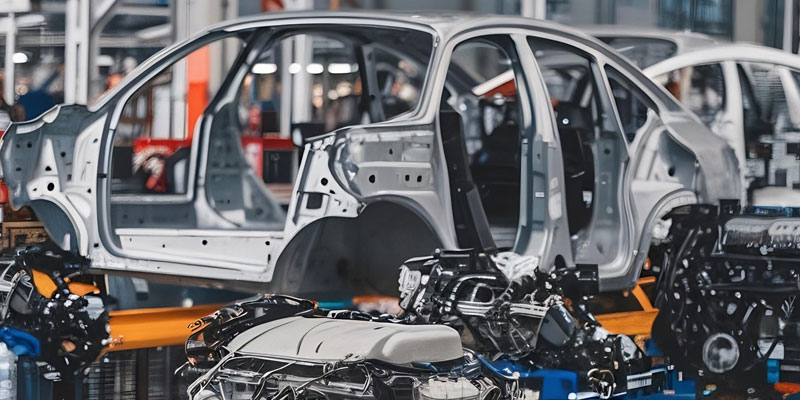Schedule a Call Back
Inculcate a Safety Culture to Stem Industrial Hazards
 Articles
Articles- Jun 26,23

Workplace injuries and fatalities are rising every day. International reports suggest that over 2.3 million people worldwide are losing their lives every year. In India, reports say at least three people succumb to workplace accidents daily. These are staggering numbers. These numbers don't account for the many unreported accidents and related fatalities. The numbers will continue to increase unless employers step up to inculcate safety as an organisation's core value.
Making safety a part of business strategy is crucial
Accidents don't just happen overnight. Most hazards usually pile up over a period when they are ignored. Common workplace hazards include fires, falls from heights, and mishaps during freight handling. Occupational accidents also result from explosions, fires, and accidents due to mechanical machinery and motor vehicles. Organisations can prevent most of these accidents. To prevent workplace accidents, employers must make safety a part of the overall business strategy to safeguard the wellbeing of their employees. Identifying and mitigating hazards through a strategic approach with comprehensive safety measures and training programs is crucial in reducing workplace accidents.
One of the steps paving the way to a safe workplace is inculcating a positive and inclusive safety culture. Safety culture means achieving a collective mindset of acceptable attitudes, values, routine behaviours and beliefs towards safety and wellbeing in the workplace. The management and workforce should share a collective safety mindset. But how should organisations inculcate a safety culture?
Set clear safety policies and practices
The first step is recognising safety as a key contributor to organisational success and sustainability. A perception survey to understand the existing safety posture would reveal the strengths and areas for improvement from the perspective of the organisation's culture. Organisations can use the insights to frame a clear and comprehensive safety policy that will help set the tone at the very top. This way, employers can ensure they develop a direction for the workforce to act safely in every situation.
Review safety with regular audits
Organisations should invest in carrying out comprehensive health and safety audits. Reviewing the entire work system through safety audits will help uncloak hidden health and safety risks related to the equipment, work methods, and other environmental factors. Once the risks are identified, employers can work out remedial measures to remove or control these risks. High-risk workplaces may require specialised audits for working at elevated heights, confined spaces, lifting operations, ground excavations and electrical and fire safety. Safety audits, when done regularly as part of the standard operations, ensure that adherence to safety norms becomes a regular part of workplace operations.
Engage employees in safety initiatives
A safe workplace culture is not possible without the active participation of all employees in making the organisation safe. Therefore, the leadership should involve their employees while planning safety initiatives. Leaders should also integrate safety into business plans and decisions. Building competency is essential in enhancing a safety culture. Organisations will be able to garner more insights into risks by involving employees in conversations on safety. Involving employees will also help foster a sense of ownership among the workforce on safety practices.
Develop an effective safety communication strategy
Employers should establish simple communication channels for employees to address safety issues or voice concerns. A toll-free number and an email address for health and safety-related grievances and suggestions are steps that organisations should consider.
To build a robust safety culture, organisations must have a communication strategy that consistently emphasises the importance of safety. It should focus on making safety a top-of-mind priority. The communications strategy should include safety awareness programs, training and induction modules.
The communication campaign should focus on safety from the employees' perspective so that they see value in following safety practices.
Personalising communication can help maximise effectiveness. By communicating the need for safety to everyone, organisations can tell employees what they stand to gain if they follow safety policies and what they can lose personally in case of non-compliance.
Everyone should be made accountable for safety
Making people accountable for their actions is essential in case of non-conformance to established safety standards. A safety culture cannot be built without accountability. Individuals should be made responsible for the adherence to safety guidelines and non-compliance. By making safety audits a regular part of the standard operations, employers can ensure that commitment to safety norms becomes a natural part of the enterprise operations.
Making safety a part of the performance evaluation criteria for all employees is an excellent way to get everyone involved. Incidents of hazardous incidents, near misses, and instances of non-conformance to safety guidelines can be considered while evaluating the performance of all employees. These evaluations can be made collectively for entire departments and teams, ensuring that employees collaboratively follow safe practices.
Safety culture is rewarding in the long run
Building a safety culture in an enterprise takes time. It involves bringing about behavioural change among employees. This requires extensive expertise in health and safety management and experience in change management. However, when safety becomes an integral part of an organisation, it offers several benefits. It can reduce the likelihood of injuries and fatalities, help automate adherence to organisational safety policies, mitigates the negative impact and losses when accidents occur, minimises compliance risks and, above all, builds trust among leaders, employees, and contractors. As a result, a safety culture goes a long way in stemming workplace hazards and ensuring a productive workforce.
About the author
Suresh Tanwar is the Head of Audit and Consultancy – India at British Safety Council. He has a rich experience in safety and health with hands on experience in the initial period of his career with companies like Johnson & Johnson, Tata Chemicals and BJ Services (now Baker Hughes, a GE company). He has been providing leadership & direction in Safety & Health and formulating safety & health strategies and policies with oversight on governance and compliance.
Related Stories

The Growing Threat of Heat Stress in the Workplace
Extreme heat puts millions of workers at serious risk globally. Suresh Tanwar, Senior Head of Audit and Consultancy, British Safety Council, India, highlights the growing threat of heat stress in th..
Read more
Enhancing safety in high-risk industries: Suresh Tanwar
Similarly, it is crucial to invest in the training of the workforce and safety awareness. Safety must commence on the first day of employment, irrespective of the type of job or contract, remarks Su..
Read more
Unlocking the power of Behaviour Based Safety in workplaces: Suresh Talwar
A solid Behaviour-Based Safety Programme is crucial for boosting safety performance and keeping employees committed to staying safe.
Read moreRelated Products

Face Shield for Helmet
Harry Collection offers a wide range of face shield with helmet.

Eva (Ethylene Vinyl Acetate Co-polymer) Gloves
Primark Healthcare Private Limited offers a wide range of EVA (ethylene vinyl acetate co-polymer) gloves. Read more

Vinyl Gloves (Powdered)
Primark Healthcare Private Limited offers a wide range of vinyl gloves















